Call Sheets Samples
-
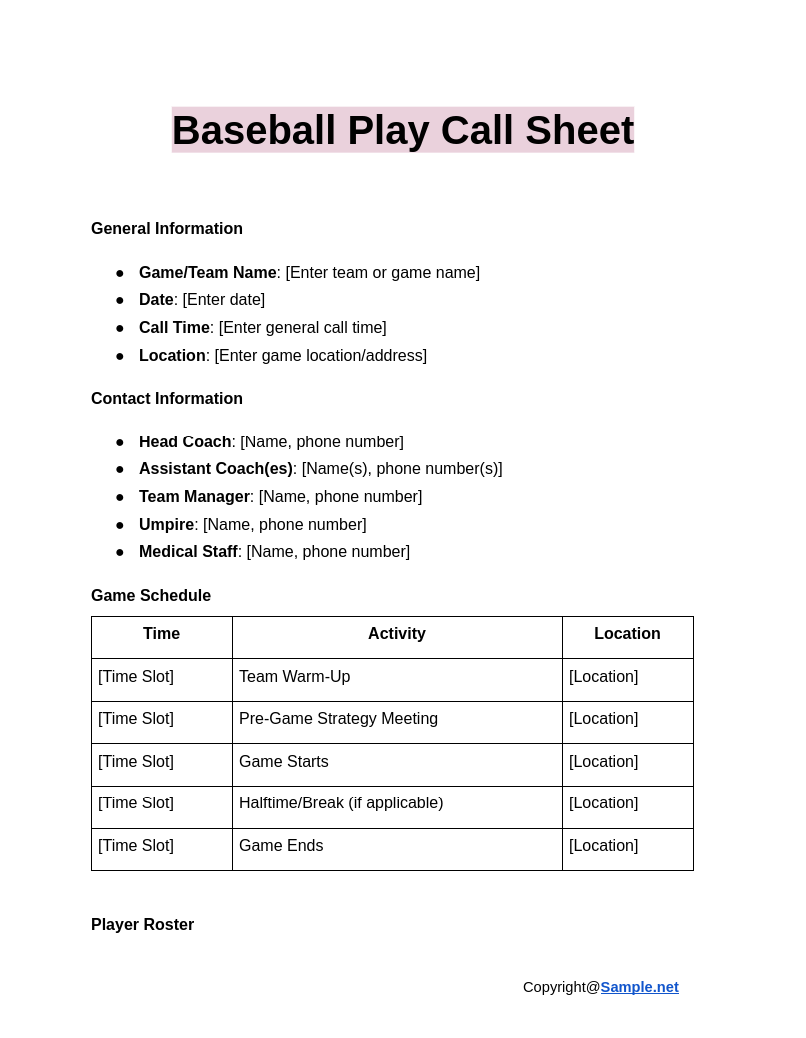
Baseball Play Call Sheet
download now -
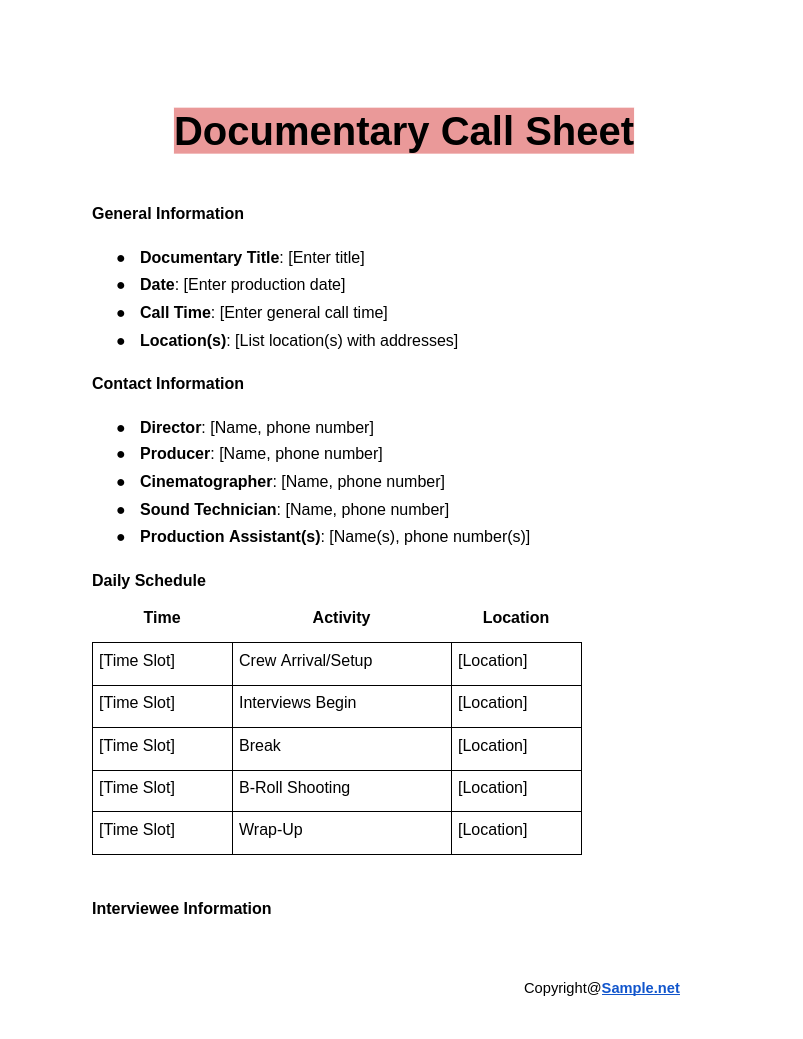
Documentary Call Sheet
download now -
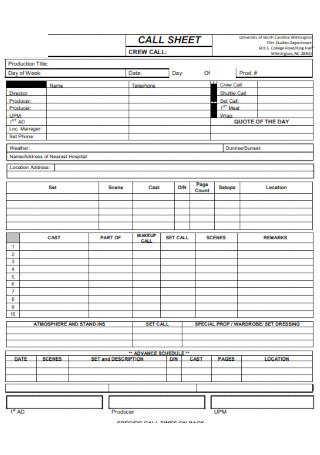
Sample Call Sheet Template
download now -
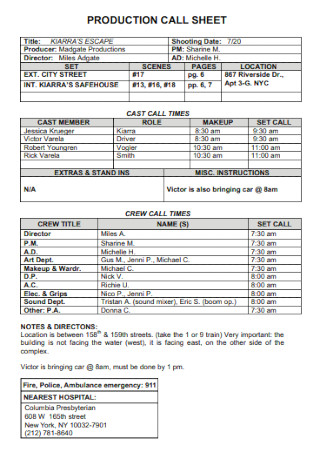
Production Call Sheet
download now -
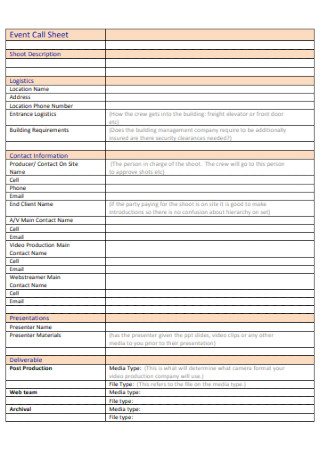
Event Call Sheet Template
download now -
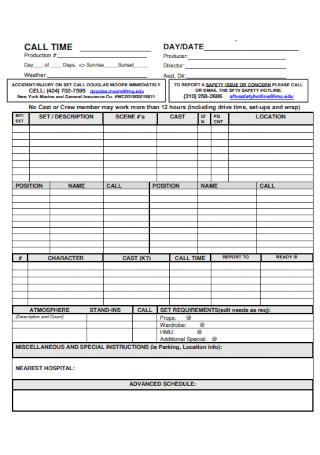
Call Time Sheet
download now -
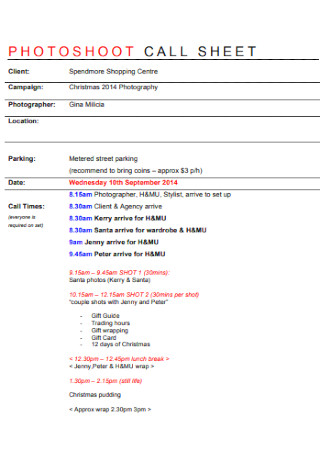
Photoshoot Call Sheet
download now -
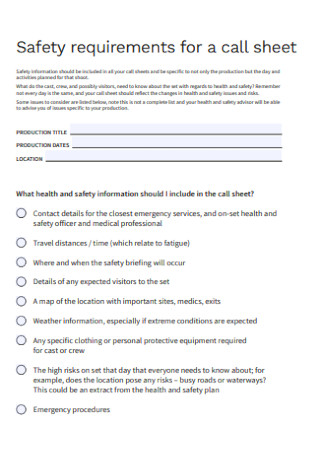
Safety Requirements for Call Sheet
download now -
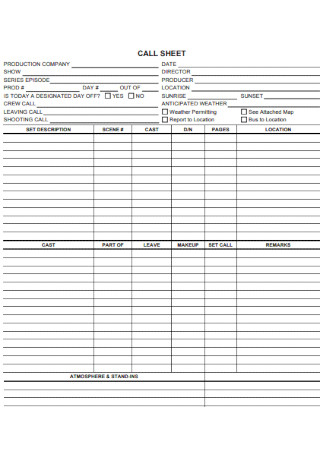
Simple Call Sheet Template
download now -
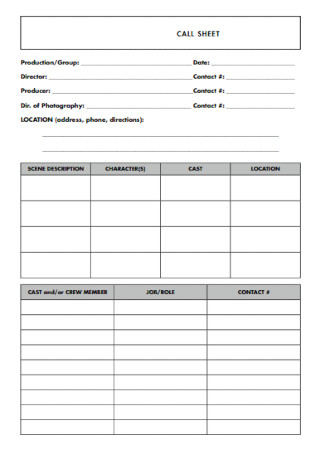
Education Call Sheet
download now -
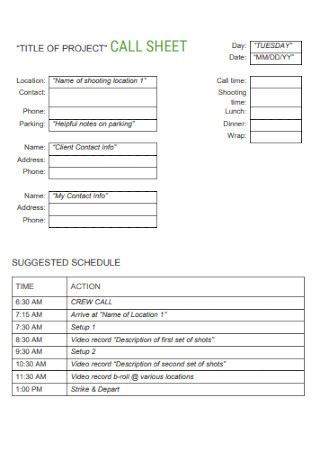
Project Call Sheet
download now -
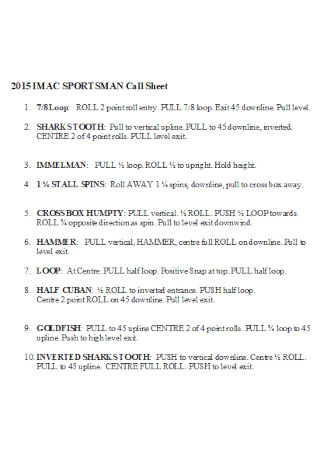
Sport Man Call Sheet
download now -
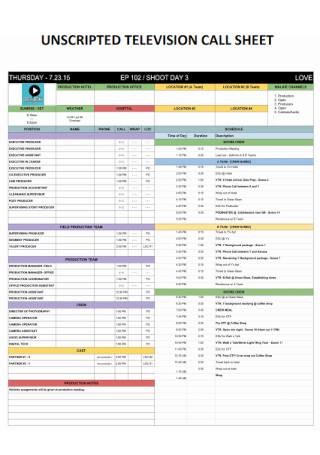
Television Call Sheet
download now -
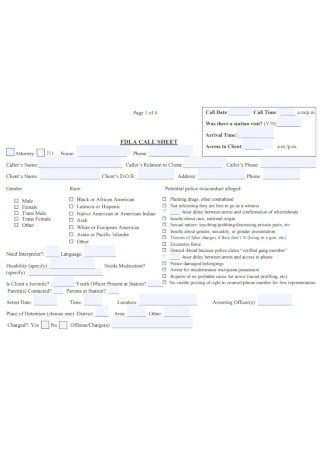
Legal Call Sheet Template
download now -
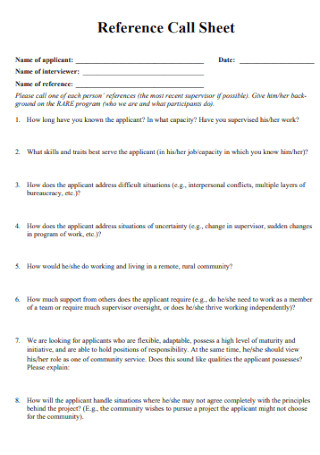
Reference Call Sheet
download now -
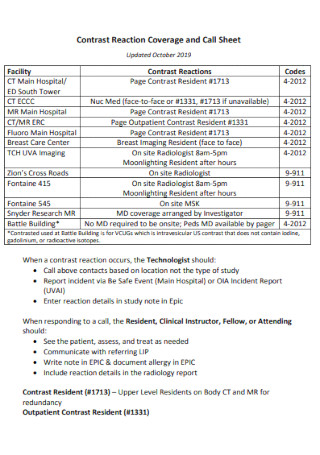
Contrast Reaction Call Sheet
download now -
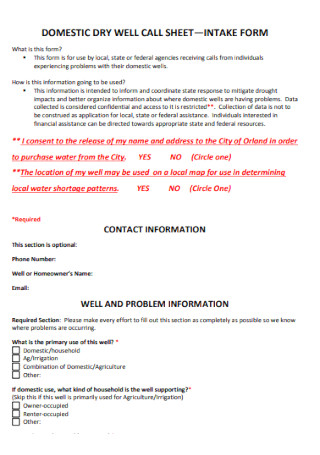
Domestic Dry Call Sheet
download now -
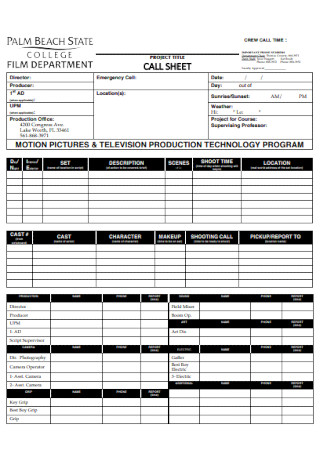
Film Department Call Sheet
download now -
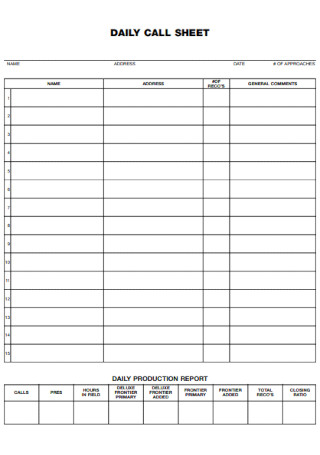
Daily Call Sheet
download now -
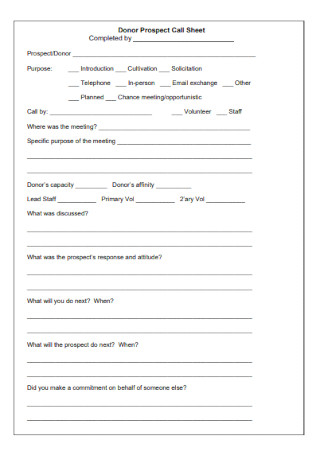
Donor Prospect Call Sheet
download now -
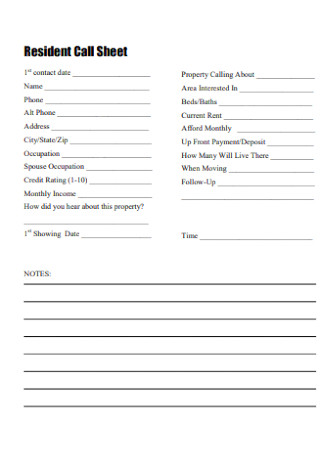
Resident Call Sheet
download now -
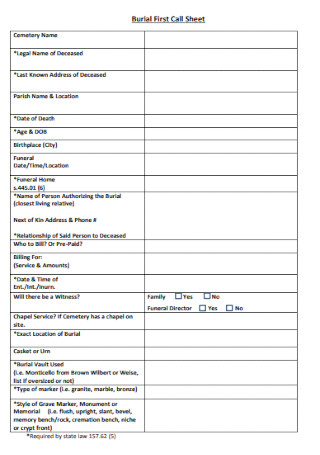
Burial First Call Sheet
download now -
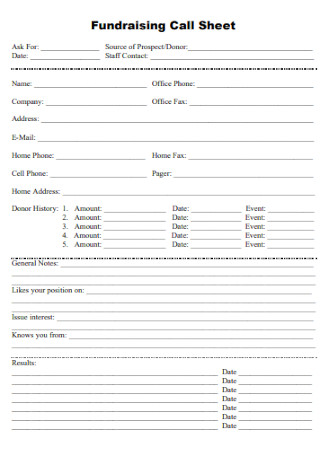
Fundraising Call Sheet
download now -
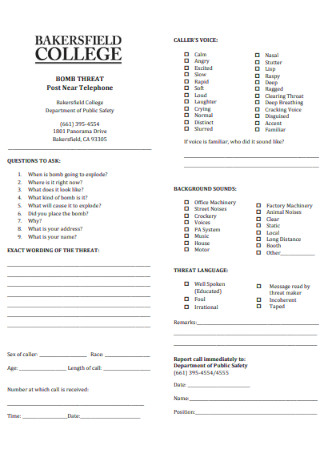
College Call Sheet
download now -
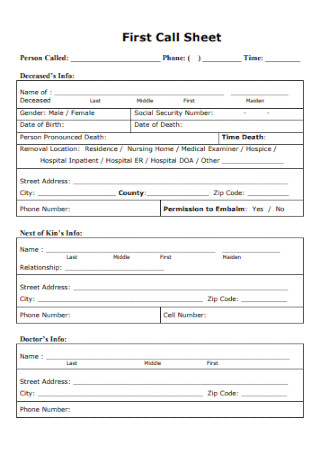
First Call Sheet
download now -
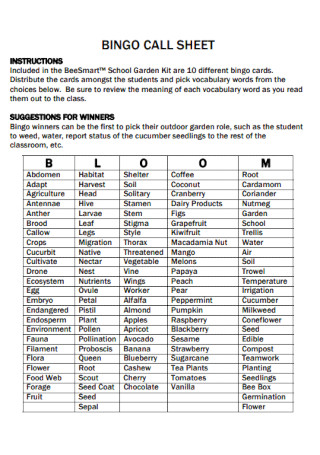
Bingo Call Sheet
download now -
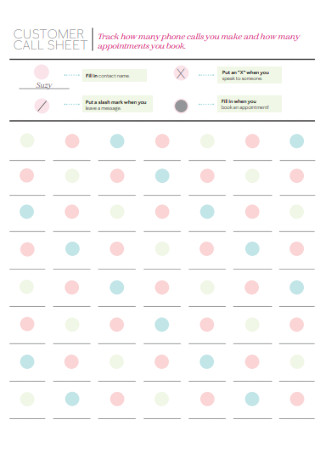
Customer Call Sheet
download now -
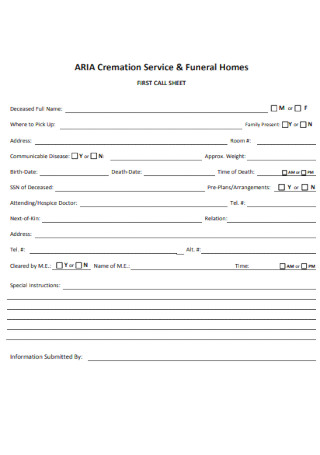
First Call Sheet Template
download now -
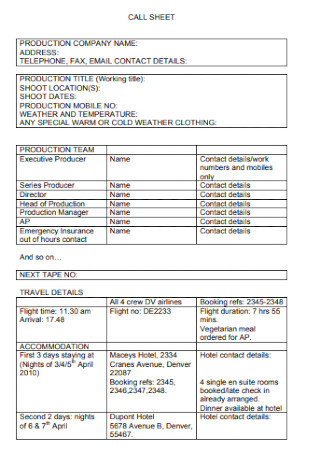
Basic Call Sheet Template
download now -
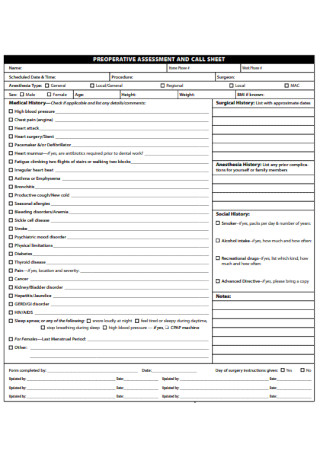
Assessment Call Sheet
download now -
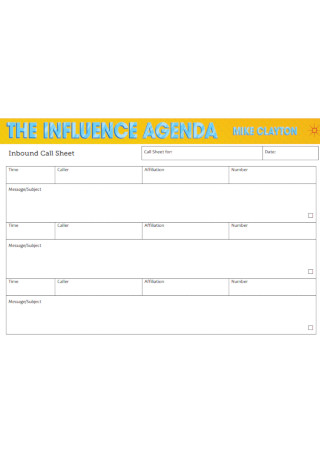
Inbound Call Sheet
download now -
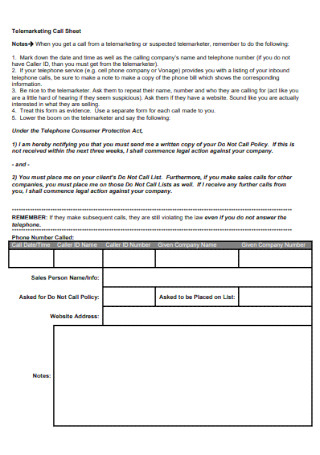
Telemarketing Call Sheet
download now -
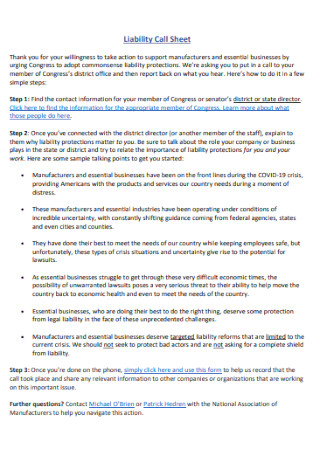
Liability Call Sheet
download now -
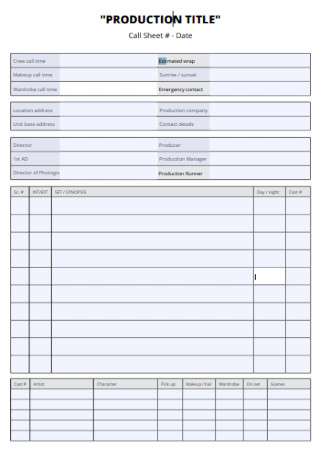
Production Title Call Sheet
download now -
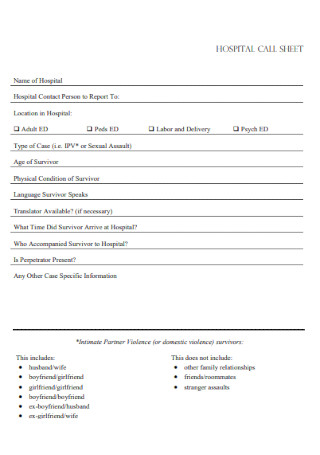
Hospital Call Sheet
download now -
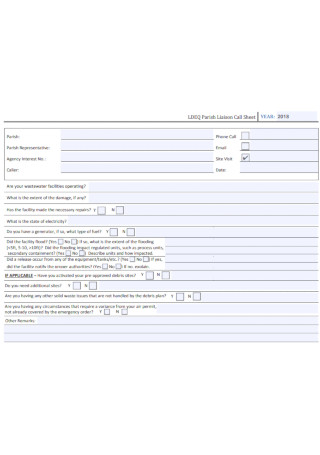
Liaison Call Sheet
download now -
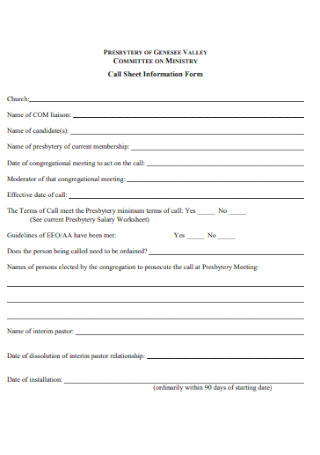
Call Sheet Information Form
download now -
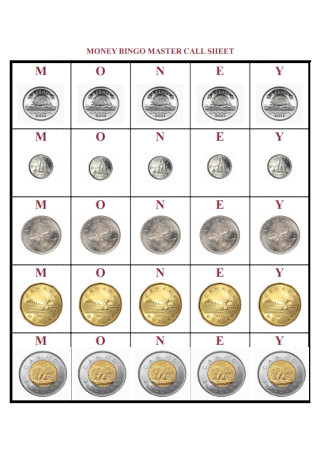
Money Call Sheet
download now -
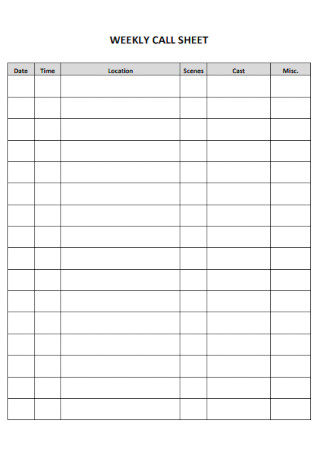
Weekly Call Sheet
download now -
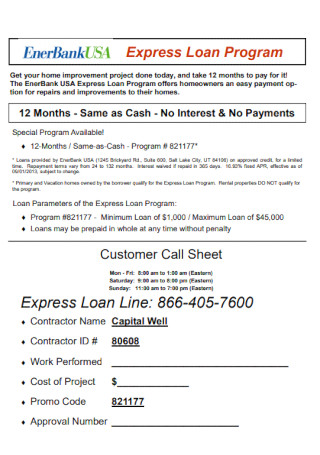
Customer Loan Call Sheet
download now -
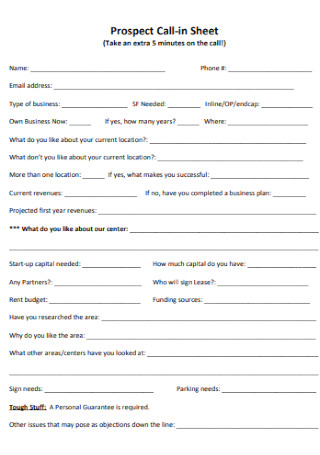
Prospect Call in Sheet
download now -
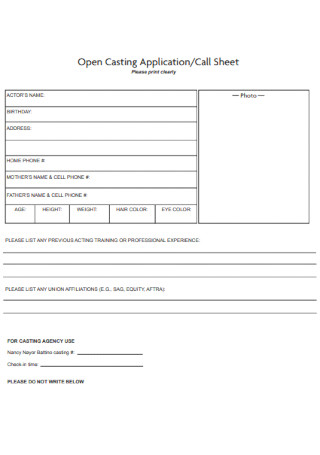
Casting Application and Call Sheet
download now -
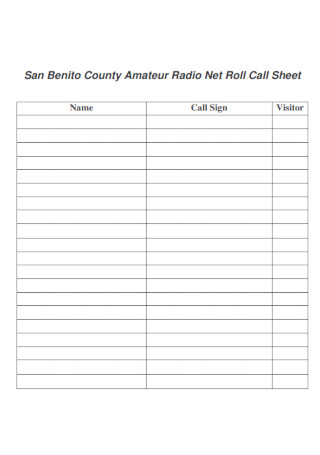
Radio Net Roll Call Sheet
download now -
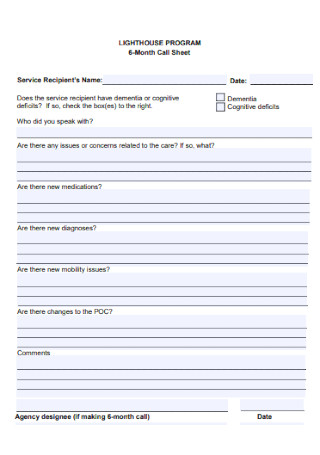
Six Months Call Sheet
download now -
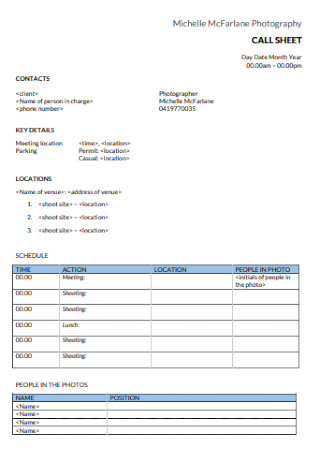
Photography Call Sheet
download now -
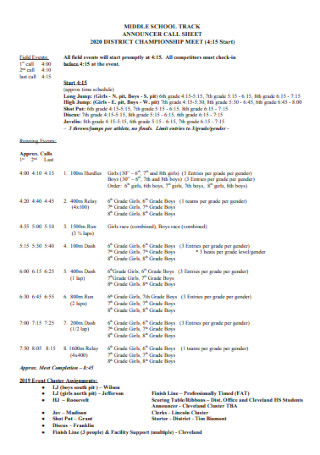
Announcer Call Sheet
download now -
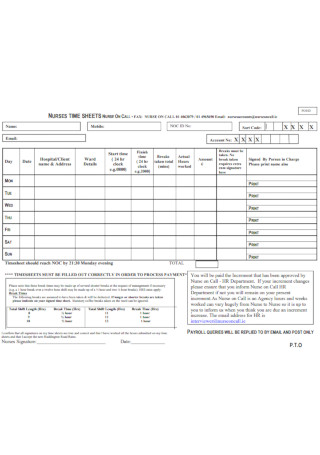
Nurses Time Sheet
download now -
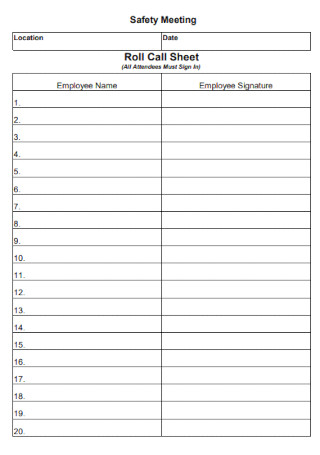
Safety Meeting Call Sheet
download now -
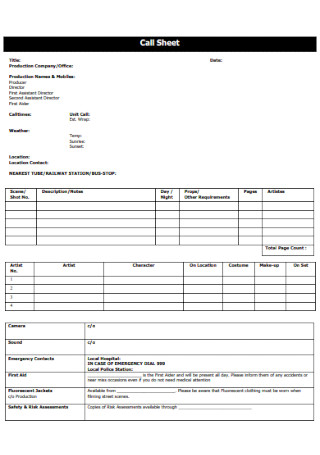
Call Sheet Format
download now -
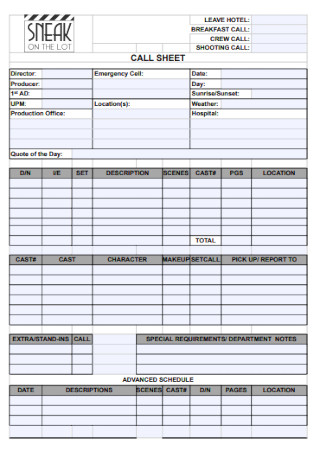
Standard Call Sheet Template
download now -
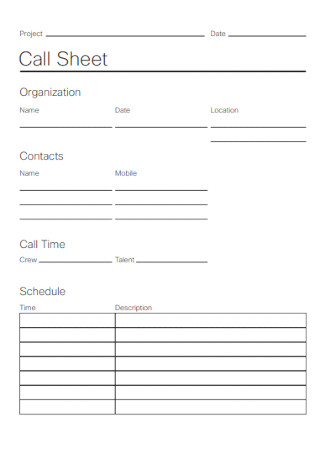
Formal Call Sheet Template
download now
FREE Call Sheet s to Download
Call Sheet Format
Call Sheets Samples
What are Call Sheets?
What to include in a Basic Call Sheet
How to Create a Call Sheet
FAQs
Why is a call sheet important?
How big is the global movie production industry?
What is a call time?
What role does a call sheet play in last-minute changes?
What role does a call sheet play in last-minute changes?
How does a call sheet improve communication?
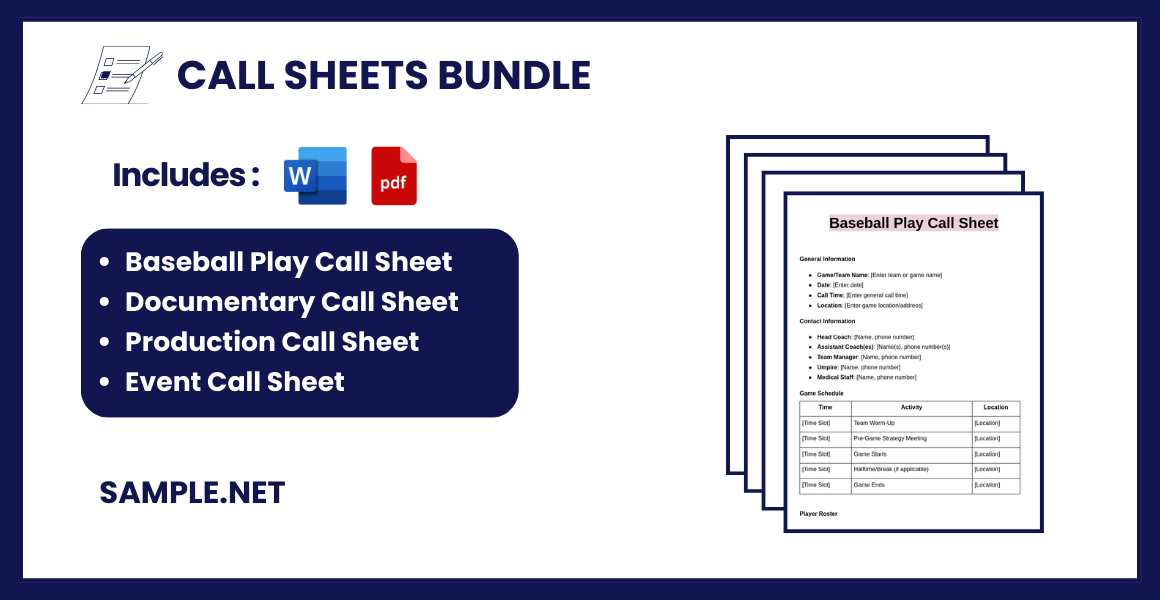
Call Sheet Format
General Information
- Project Name: [Enter the project name]
- Production Company: [Enter the company name]
- Date: [Enter the date of production]
- Call Time: [Enter the general call time]
Contact Information
- Director: [Name, phone number]
- Producer: [Name, phone number]
- Assistant Director (AD): [Name, phone number]
- Production Manager: [Name, phone number]
- Emergency Contact: [Name, phone number]
Location Details
- Primary Location: [Address with any relevant directions or parking info]
- Backup/Secondary Location: [Address with notes if applicable]
Schedule
| Time | Activity | Location |
|---|---|---|
| [Time Slot] | [E.g., Crew Arrives] | [Location] |
| [Time Slot] | [E.g., Rehearsals Begin] | [Location] |
| [Time Slot] | [E.g., Shooting Starts] | [Location] |
| [Time Slot] | [E.g., Break/Lunch] | [Location] |
| [Time Slot] | [E.g., Wrap Up] | [Location] |
Crew Call Times
| Department | Call Time | Contact Person |
|---|---|---|
| [E.g., Camera Team] | [Call Time] | [Contact Name] |
| [E.g., Makeup/Hair] | [Call Time] | [Contact Name] |
| [E.g., Sound Team] | [Call Time] | [Contact Name] |
Cast Call Times
| Cast Member | Role | Call Time | Makeup/Costume Time |
|---|---|---|---|
| [Name] | [Role Name] | [Call Time] | [Time Slot] |
Equipment Notes
- [List of essential equipment needed for the day, with any notes on setups]
Shot List (If Applicable)
| Scene | Shot Description | Camera Setup | Duration |
|---|---|---|---|
| [Scene #] | [Description] | [Setup Details] | [Approx Time] |
Additional Notes
- Weather Forecast: [Include weather conditions if shooting outdoors]
- Parking Instructions: [Details about parking for crew/cast]
- Safety Notes: [E.g., emergency exits, medical kit location]
What are Call Sheets?
A call sheet is a detailed schedule used in productions to communicate the day’s shooting plan to the cast and crew. It includes information like call times, locations, crew assignments, scene details, and contact information. Call sheets are critical for ensuring everyone knows their responsibilities and where they need to be. By centralizing this information, it simplifies logistics and reduces misunderstandings. A professional call sheet enhances the efficiency and flow of production activities. You can also see more on Log Sheet.
What to include in a Basic Call Sheet
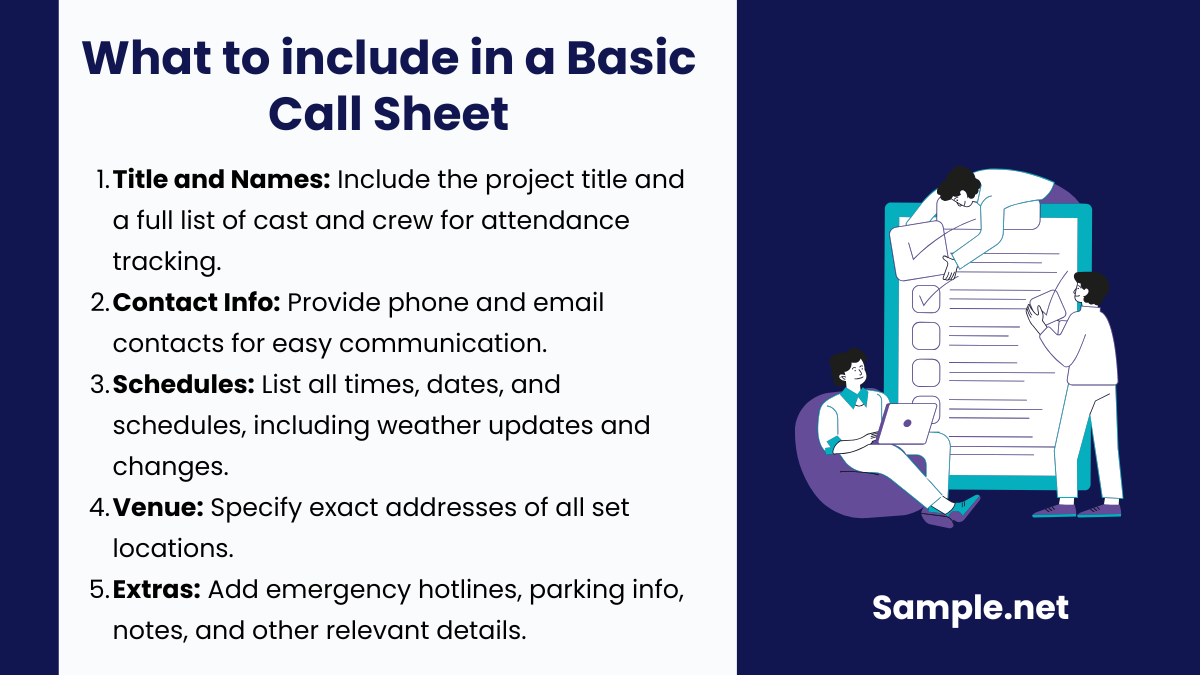
A lot of helpful information can be present in a call sheet. And some of the basic details to include there are the following:
How to Create a Call Sheet
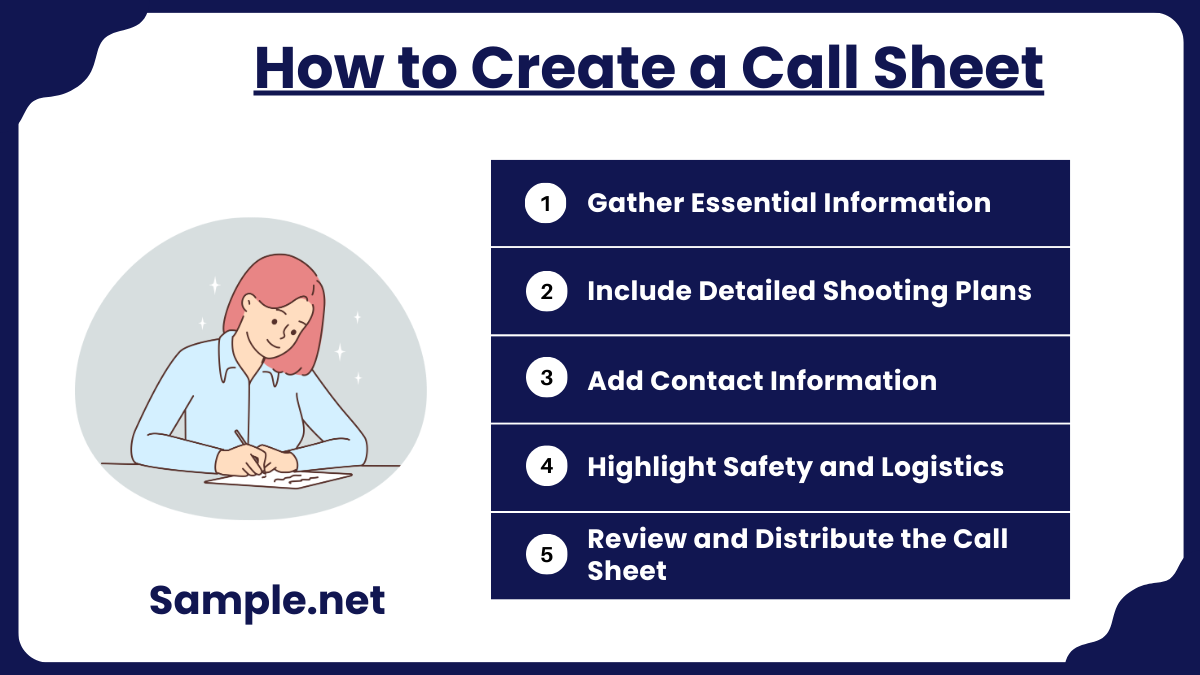
Now that you gathered enough information about a call sheet’s meaning and basic elements, how about you take your knowledge further by making the call sheet itself?
1. Gather Essential Information
Start by collecting all the necessary details, including shooting schedules, cast and crew lists, locations, and call times. Ensure that you have accurate information for each department. This step lays the foundation for creating a comprehensive and reliable call sheet. You can also see more on Run sheets.
2. Include Detailed Shooting Plans
Specify the scenes to be filmed, including scene numbers, descriptions, and the order of filming. Mention the required equipment, props, and costumes for each scene. This ensures that everyone knows exactly what is needed and can prepare accordingly.
3. Add Contact Information
Provide contact details for key personnel, including directors, producers, and department heads. This ensures that team members can easily reach out for clarifications or updates during the day. Clear communication channels are crucial for smooth production. You can also see more on Data Sheet.
4. Highlight Safety and Logistics
Include details such as emergency protocols, safety measures, and transport arrangements. Specify parking locations, access points, and any special instructions for the day. Safety and logistics are critical for ensuring a hassle-free shoot.
5. Review and Distribute the Call Sheet
Double-check the call sheet for accuracy and completeness before sharing it. Distribute it to all relevant cast and crew members well in advance. A reviewed and timely call sheet ensures that everyone is prepared and ready for the day. You can also see more on Fact Sheets.
FAQs
Why is a call sheet important?
A call sheet is crucial because it details the overall strategic plan of a project or production. Without a call sheet as your blueprint, it would be hard to remember the who, what, when, where, why, and how of a project. Thus, it boosts your success rate to run a smooth operation.
How big is the global movie production industry?
Based on a survey, the worldwide movie production and distribution industry reached about 60,000 active businesses in 2018, making it one of the growing sectors globally.
What is a call time?
A call time refers to the specific time a person should be at work. So in the production sector, the cast and crew should already be on set during the call time instead of being late. You can also see more on Sign-Up Sheets.
What role does a call sheet play in last-minute changes?
In case of sudden changes, such as schedule or location adjustments, updated call sheets ensure the team remains informed. Emergency call sheets or quick updates via communication tools can address these changes effectively. You can also see more on Tracking Sheet.
What role does a call sheet play in last-minute changes?
In case of sudden changes, such as schedule or location adjustments, updated call sheets ensure the team remains informed. Emergency call sheets or quick updates via communication tools can address these changes effectively.
How does a call sheet improve communication?
A call sheet centralizes all information, such as call times, locations, and responsibilities, making it easier for team members to stay informed. This reduces confusion and eliminates the need for constant updates during production. You can also see more on Company Sheet.
